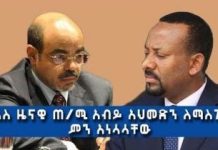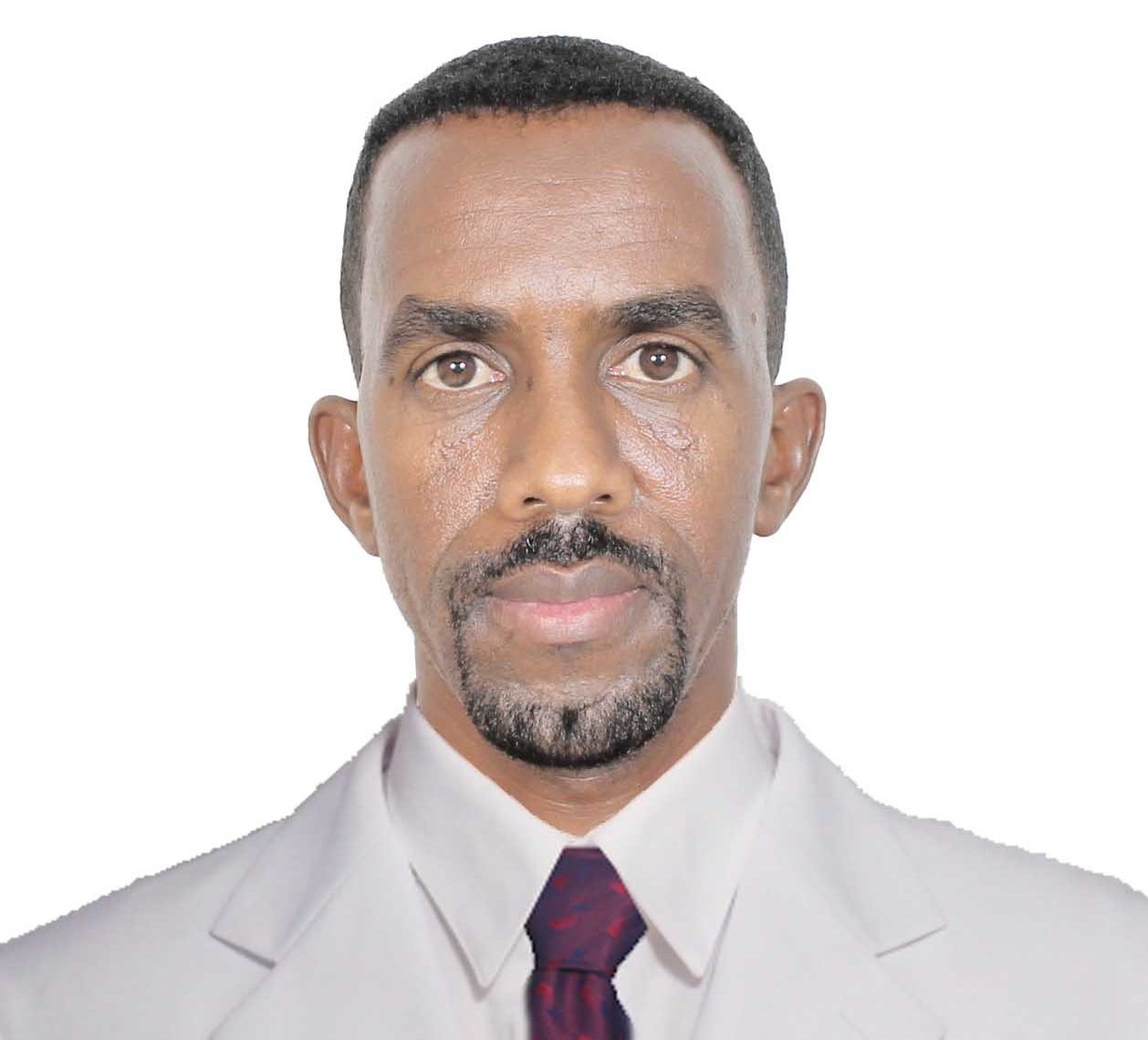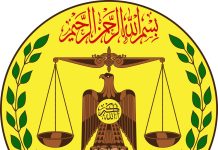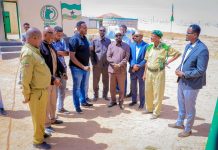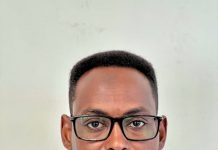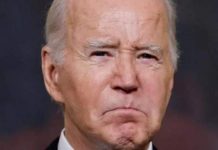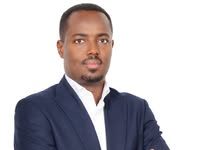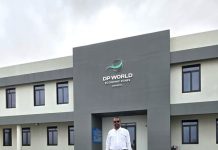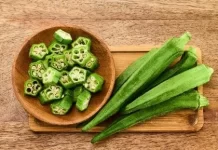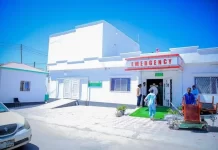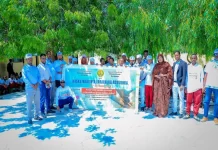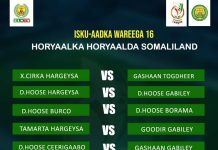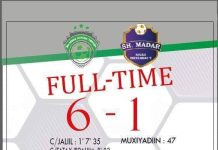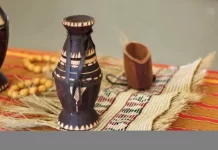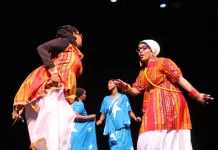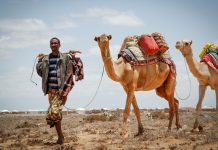2017 is year of elections for both the Federal Republic of Somalia and the Republic of Somaliland. The bicameral parliamentary selection process undertaken through 135 elders and 14,025 electoral delegates in the capitals of regions of the Federal Republic in southern, central and north-eastern Somalia has been underway since October last year. On 8 February 2017, these new and returned MPs elected Mohamed Abdullahi ‘Farmaajo’ as President. For the breakaway, de facto independent, but internationally un-recognized Republic of Somaliland in the north-west[1] of the Somali Horn of Africa, the latest manifestation of its much-lauded democratic process is now due to be undertaken in October. With incumbent President Ahmed Mohamed Mohamoud ‘Siilaanyo’ not standing, a change at the top is imminent. That both Somalia and Somaliland are holding elections in 2017 is a coincidence- a result of Mogadishu and its international backers’ ‘Vision 2016’ being delayed till this year, and political in-fighting and the humanitarian impact of severe drought bringing similar postponements to Somaliland’s vote.
‘National’ Somali politics (or ‘international’, depending on one’s perspective) is characterised by a curious blend of both separation and interconnectedness. The Government of the Republic of Somaliland, based in Hargeysa, rejected any official involvement in selection processes undertaken for the Parliament and Presidency for the Federal Government of Somalia (FGS) in Mogadishu. If Somaliland were to play any kind of official role in the FGS process this would imply that the breakaway territory was merely another ‘federal’ region, awaiting re-integration with a Mogadishu-centred national government. A large proportion of the population of the north-west see themselves as ‘Somalilanders’, and are understandably proud of their participation in the breakaway Republic’s independent electoral competitions. From the perspective of the Somali Federal Government in Mogadishu, however, Somaliland is but one errant federal region and the fiction of ‘national’ unity is maintained through the allocation of seats in its parliament to representatives of the territory and its predominant clans. ‘Somaliland’ is allocated 46 seats in the Lower House of the Somali Parliament and 11 in the Upper House. In this sense, ‘Somaliland’, represents the second largest bloc of seats in the lower house – only the Southwest State has more representation.
With this in mind, it’s no surprise that both Hargeysa and Mogadishu have an interest in each other’s separate electoral processes. This is an oft-overlooked dimension of an opaque political game played through different regional, national and separatist political institutions. There are multiple actors who could be conceived of as northern ‘representatives’ in Mogadishu, and there is a degree of mobility of certain political elites across the Somaliland/Somalia political divide. Is there, then, a relationship between 2017 elections in Somalia and Somaliland? The answer is ‘yes’ – albeit with the rejoinder that ‘it’s complicated’. Much of this complexity lies in the ambiguities of the political-geographical terminology used and intense competition over the politics of naming ‘states’, ‘territories’, ‘administrations’ and ‘regions’.
Ostensibly, ‘Somaliland’s’ representation in Somalia’s Parliament in Mogadishu demonstrates the FGS’s continued insistence on the reconstruction of the pre-1991 state which fragmented in the Somali civil war. Representation of the north-western regions thus leaves the door symbolically open for reunification and the re-integration of Somaliland based on the federal model now adopted in Mogadishu and amongst the administrations of Puntland, Jubaland, the Southwest State, Galmudug, and Hirshabelle. As mandated in the Provisional Constitution, these federal administrations have been formed out of two or more of the ‘regions’ of the former unitary state. For instance, Hirshabelle – the most recently formed administration – is made up of Hiiraan and Middle Shabelle regions. Somaliland, which does not see itself as a federal administration and has been independent since 1991, is itself made up of several regions, some (or parts) of which are disputed with Puntland. Herein lies one of the difficulties in using the sensitive political jargon of ‘state’, ‘administration’ and ‘region’ for political analysis across a highly fragmented territory.
Similar to the selection of other members of the Somali national Parliament, representatives for ‘Somaliland’ have been chosen through the votes of clan elders and electoral delegates. However, unlike most of the other federal administrations, this has occurred not in its respective capital city, but in Mogadishu itself. Details of the engagement of ‘Somaliland’ elders are vague, although it is clear that they hail from the dominant clans most commonly associated with the north-west regions[2]. Selections of MPs for the Mogadishu-based FGS Parliament once again employed the controversial 4.5 system of representation for the 4 major clan-families, with a half share for so-called ‘minorities’. Whilst lists of elders involved in the selection process of electoral delegates were drawn up in terms of these clan families, final lists of MPs use the geographical terminology of the federal administrations listed above. MPs for ‘Somaliland’ primarily hail from the broad Dir clan family, whilst non-Dir populations of the regions claimed by Somaliland (e.g. the Dhulbahante and Warsangeli) were eventually included amongst the Upper House candidates for Puntland[3]. This was part of the deal made by Mogadishu to co-opt Puntland into accepting this final use of the 4.5 system which Garoowe has long opposed.
Assigning Upper House representation of the clans who predominantly inhabit the regions disputed by Somaliland and Puntland to the latter can be seen as a means of destabilising the hegemony of the broader idea of ‘Somaliland’ (in the historical British Protectorate borders it claims) and is another reason for Hargeysa to fundamentally reject the FGS selection process. Nonetheless, Somaliland’s non-participation in the Mogadishu process must have presented something of a dilemma for its political leaders in that it could be interpreted by some as a symbolic ceding of Somaliland’s control of representation in these disputed regions to Puntland. It also illustrates the type of leverage that Puntland can exercise on the FGS in Mogadishu with which it maintains an ambiguous and often strained political relationship and against Somaliland with which it is in direct competition for territory.
The actual means by which such traditional elders were selected for the Mogadishu process is similarly unclear. Media in Somaliland alleged that the FGS was involved in the covert recruitment of ‘fake’ elders in the Northwest alongside the engagement of northern clan figures who are long-term residents of Mogadishu[4]. Disputes over the actual authority of clan elders is a common occurrence in wider Somali politics, and the interaction between customary clan norms of representation and embryonic state systems mean that elders’ positions are frequently challenged. Combined with the inherent tensions between the political objectives of governments in Hargeysa and Mogadishu and ubiquitous accusations of ‘corruption’, this makes for a highly contestable process for actors of different affiliations.
Questions around the selection of these selectors aside, the practical process in Mogadishu of choosing MPs to both the upper and lower houses was delayed by disputes between the Somaliland elders and the Federal Indirect Electoral Implementation Team (FIEIT). Media reports suggested that some of these elders demanded the process be moved from the Somali Police Force’s Transport Headquarters to the AMISOM-secured Halane camp next to the airport. Given Al Shabaab’s past record in attacking government compounds and locations where MPs have gathered, considerations of the security of the selection processes are understandable. Nonetheless, some commentators based in Somaliland suggested that the calls for a change of venue were related to the allegations from some of the elders that they were being unduly pressured by government figures such as the outgoing FGS Minister of Information Mohamed Abdi Hayir ‘Mareye’, himself hailing from the north[5].
Mareye has subsequently been re-elected as one of the ‘Somaliland’ MPs of the Lower House and out of the 46 ‘Somaliland’ seats, 22 other incumbent MPs have retained their positions. Looking at politicians such as Mareye and others raises questions about the role of individuals with regard to Somalia/Somaliland relations. From Mogadishu’s perspective, allocating prominent roles to apparently ‘unionist’ orientated individuals hailing from the north-west is another means to maintain an image of nationwide representativeness. Political commentary in Hargeysa, however, often either castigates such individuals as traitors or mocks them as ‘flops’ fleeing from failure in Somaliland politics[6].
Nonetheless, certain ambiguities exist around the role of particular politicians who appear to have straddled the Somalia/Somaliland divide. An interesting case is MP Fowsiya Haji Aden, a politician hailing from the north and previously considered to be a Somaliland ‘nationalist’, but who entered politics in Mogadishu in 2012 and became Foreign Minister in Hassan Sheikh Mohamoud’s then recently formed government. Arguably, this move was prompted by the frustration of her political ambitions in Somaliland.. In her stint as Foreign Minister for Somalia between 2012 and 2014 she maintained a fairly ambiguous position with regard to Somaliland’s status. Her appointment back in 2012 could have been seen at the time as an olive branch offered by Mogadishu for the resumption of negotiations with Somaliland. Nonetheless, when negotiations did take place during Hassan Sheikh Mohamoud’s term (facilitated by Turkey) they were derailed by Somaliland’s opposition to the involvement of northerners as part of the FGS’s delegation[7]. The role of ‘unionists’ in the diplomatic wrangling between Hargeysa and Mogadishu remains highly contentious and it remains to be seen what type of strategy will be pursued by both the new government in Mogadishu and a new leadership expected to be elected through wider suffrage in Somaliland later this year.
Whilst some in Hargeysa have branded Fowsiya a ‘traitor’ to the Somaliland cause there is often disagreement amongst commentators about the varying roles of other northern-origin politicians[8]. For instance, deputy Prime Minister of Somalia, Mohamed Omar Arte, has been accused of more actively undermining Somaliland’s de facto independence, particularly with statements made about his inability to return home to visit his family in Hargeysa. Regardless of the deputy Prime Minister’s intentions, travel restrictions have been a sporadically high-profile means by which Somaliland has demonstrated its authority. These policies clearly demarcate Somalia as a separate country, whose residents require appropriate travel documentation and permissions to enter. They also give the Somaliland authorities a means to detain and question various individuals or groups who are suspected of undermining Somaliland’s independence agenda, particularly vis-á-vis relationships with the FGS in Mogadishu. At the same time, contacts between Somaliland politicians and members of the FGS may also become a political issue in the context of Somaliland’s own upcoming elections. Presidential candidate Abdirahman Cirro was recently forced to deny accusations from his opponent Muse Bixi that he had met with senior FGS leaders in Nairobi, demonstrating the potential political sensitivity in Hargeysa of allegations of infidelity to the Somaliland independence cause.
Another interesting element of electoral interaction may be seen in Mogadishu’s partial success in increasing female representation in the FGS parliament. Whilst falling short of the controversial 30% quota set by the ‘international community’, the FGS Parliament will be made up of 24% women, a significant increase from 2012[9]. Somaliland, which prides itself on its democratic process and uses elections as a powerful tool of international propaganda for its recognition cause, has yet to institute any such quotas and only has one female legislator in its 82 seat Lower House and none in the Guurti Upper House. There is no indication that this will significantly change in the next elections. There is a sense amongst some Somaliland commentators and civil society actors that the breakaway state’s ‘enigmatic’ international image is starting to lose some of its novelty[10]. While it was once easy for Somaliland to define itself as an island of security and democratic success in a sea of regional instability, the coalescence of nascent Federal state administrations and the relatively successful handover of executive power in Mogadishu this year may draw international attention elsewhere. Serious obstacles remain for these Federal administrations both in terms of the quality and representativeness of their developing electoral mechanisms, and yet the increased participation of women is one ‘success’ which might put pressure on Hargeysa to institute similar quotas. This is a sensitive question in both the north and south (charges of anti-Islamic western meddling abound) and yet it may be important for the image of democratic stability which Somaliland will continue to deploy in support of its efforts for recognition.
Despite the political distance which exists between the Somali Federal Government and that of the Republic of Somaliland, both sets of electoral politicking influence both sets of actors. Popular and elite discourse between the capitals ranges from accusations in the north that representation in the Somali parliament undermines the Somaliland independence project, to conspiracy theories in the south that allege a covert role of northern agents seeking to contribute to political instability there[11]. Nonetheless, there may be modest potential for certain actors to straddle the north-south divide and promote future dialogue for either the peaceful coexistence of independent states or rapprochement and a new form of political settlement. Likewise, some commentators note that for all the public bluster about ‘treason’ and ‘conspiracy’, there remain personal links between some political elites in Hargeysa and Mogadishu[12] and that the rhetoric expressed in media and in official political communications may not mirror the type of discussions which take place behind closed doors.
The complex intertwining of the processes of ‘regional’ elections in a context where the fiction of a unitary Somalia is maintained by the FGS and the ‘international community’ creates multiple channels through which political agency is exercised. The very notions of ‘separateness’ and ‘inclusion’ are highly political, as are ideas around representation couched in clan-based and/or ‘regional’ terms. This article has introduced some of ways in which actors exert agency and express sovereignty between these political capitals. The potential impact of such activity for the future of the political map means that such relationships deserve further attention from analysts trying to make sense of political lexicons of ‘regional’ representation and resistance across what was once the unitary state of ‘Somalia’.
Peter Chonka is a doctoral researcher at the University of Edinburgh’s Centre of African Studies and a teaching fellow at the School of Oriental and African Studies. He may be reached at pc51@soas.ac.uk and he tweets at @petechonka
Source: life-peace.org

